|
 Secure Site
Secure Site
|
 |
Archive for the 'Beauty' Category
 mindful eating Conscious eating
Just as you bring mindfulness to your yoga practice, you can be mindful at mealtime. Yoga philosophy and all of the world’s healthiest diets recommend a conscious eating practice for optimal health. Mediterranean cultures traditionally regard meals as experiences to be savored and a life pleasure meant to be enjoyed. Asian cultures consider eating an aesthetic experience and reverentially enjoy beautifully prepared and presented foods that nourish the senses—to see, smell, touch, taste, and observe any sounds—while slowly eating the meal.
The Slow Food movement is reviving and sharing the benefits of conscious eating and the enjoyment of wholesome foods. Slow Food USA, part of the international Slow Food movement, is dedicated to supporting local farmers, the production of regional foods, and small producers. The movement promotes a slower lifestyle that cultivates time for conscious food preparation and eating, and opposes the fast life exemplified by corporatized foods and degradation of farmland.
 conscious eating, a mindfulness practice Eat Here Now
How can you incorporate mealtime mindfulness into your own life? Try the following essential components of a conscious-eating practice.
1. Schedule time for meals. Allocate at least twenty minutes each for meals and/or enough time to truly experience the food you eat. Avoid overeating. Set your Zen Timer for at least 20 minutes.
2. Eliminate distractions during meals. Eat slowly in a calm, quiet environment without a blaring television, loud music, or your computer as an accompaniment. The experience of the meal should be the focus of your attention and entertainment.
3. Enjoy conscious eating. Practice a state of awareness while you eat. Savor the appearance, smell, and taste of your food, so you can be truly satisfied. Chew each bite twenty times, which will help digestion and keep your attention in the moment. Enjoy the rasa, or “juice” of the food, through our senses.
4. Practice snacking awareness. Avoid mindless snacking, eating while you’re talking, and snacking just because food is present.
5. Use tasteful presentation. Small portions beautifully arranged on an attractive plate nourish the senses and encourage you to savor each bite.
6. Practice cooking meditation. Feed your soul by incorporating mindfulness as you cook. Allow cooking to express your love and be the ultimate gift to others, as the food we eat literally becomes a part of us physically, mentally, and spiritually, in our cells, skin, bones, and thoughts.
7. Count your blessings. Before your meal, experience a moment of thankfulness for having food.
adapted from Natural Home Magazine, November/December 2005 by Elaine Gavalas
 Bamboo Zen Timers with Chime Now & Zen
1638 Pearl Street
Boulder, CO 80302
(800) 779-6383
Posted in Beauty, Chime Alarm Clocks, intention, Meditation Timers, mindfulness practice, Well-being, Zen Timers
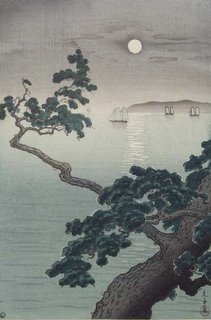 Koitsu, "Full Moon at Akashi Beach" Ukiyo-e Woodblock Print The spiritual aspect of ikebana (Japanese flower arranging) is considered very important to its practitioners. Silence is a must during practices of ikebana. It is a time to appreciate things in nature that people often overlook because of their busy lives. One becomes more patient and tolerant of differences, not only in nature, but also in general. Ikebana can inspire one to identify with beauty in all art forms. This is also the time when one feels closeness to nature which provides relaxation for the mind, body, and soul.
adapted from wikipedia.org
 Zen Alarm Clock, Ukiyo-e Hokusai Wave Dial Face
Now & Zen
1638 Pearl Street
Boulder, CO 80302
Posted in Beauty, Chime Alarm Clocks
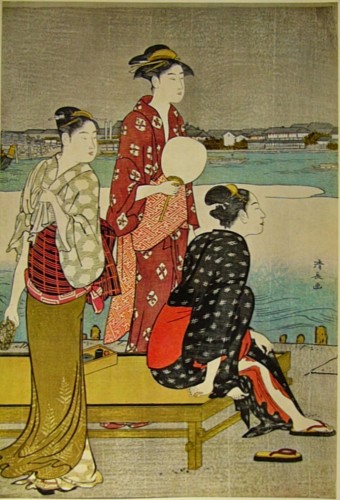 Kiyonaga Riverside Ukiyo-e The phrase iki is generally used in Japanese culture to describe qualities that are aesthetically appealing and when applied to a person, what they do, or have, constitutes a high compliment.
Iki is not found in nature. While similar to wabi-sabi in that it disregards perfection, iki is a broad term that encompasses various characteristics related to refinement with flair.
The tasteful manifestation of sensuality can be iki.
Etymologically, iki has a root that means pure and unadulterated. However, it also carries a connotation of having an appetite for life. Iki is never cute.
The basis of iki is thought to have formed among urbane commoners (chonin) in Edo in the Tokugawa period (1603 to 1868). Iki is sometimes misunderstood as simply “anything Japanese”, but it is actually a specific aesthetic ideal, distinct from more ethereal notions of transcendence or poverty. As such, samuri, for example, would typically, as a class, be considered devoid of iki, (see yabo).
At the same time, individualistic warriors are often depicted in contemporary popular imagination as embodying the iki ideals of a clear, stylish manner and blunt, unwavering directness. The term became widespread in modern intellectual circles through the book The Structure of “Iki” (1930) by Kuki Sukuzo.
adapted from wikipedia.org
 Digital Zen Timers, a mindfulness practice tool Now & Zen
1638 Pearl Street
Boulder, CO 80302
Posted in Bamboo Chime Clocks, Beauty, Meditation Tools, mindfulness practice, Natural Awakening, Now & Zen Alarm Clocks, Progressive Awakening, wabi-sabi, Yoga Timer, Zen Timers
 Hana Wachigai, the crest of the Izumo Genji clans (Oki, Enya, Takaoka) Mon, also monshō, mondokoro, and kamon, are Japanese heradic symbols. Mon may refer to any symbol, while kamon and mondokoro refer specifically to family symbols.
There are no set rules in the design of a mon. It most commonly consists of a roundel encircling a figure of plant, animal, man-made, natural or celestial objects, all abstracted to various degrees.
Religious symbols, geometric shapes and kanji were commonly used as well. Virtually all modern Japanese families have a mon, though modern usage is rare. Many Japanese may no longer recognize their own family’s mon.
adapted from wikipedia.org
 Zen Chime Alarm Clock, Digital Black Lacquer by Now & Zen Now & Zen
1638 Pearl Street
Boulder, CO 80302
(800) 779-6383
Posted in Beauty, Chime Alarm Clocks, Japanese Inspired Zen Clocks
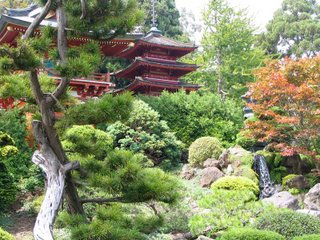 Hagiwara Japanese Tea Garden in San Francisco, California, showing the use of stone, water and plants Tsukiyama Gardens often copy famous landscapes from China or Japan, and they commonly strive to make a smaller garden appear more spacious.
This is accomplished by utilizing shrubs to block views of surrounding buildings, and the garden’s structure usually tries to make onlookers focus on nearby mountains in the distance. By doing this, it seems that the garden has the mountains as part of its grounds. Ponds, streams, hills, stones, trees, flowers, bridges, and paths are also used frequently in this style.
adapted from wikipedia.org
 Zen Timer for meditation by Now & Zen Inc.
Now & Zen
1638 Pearl Street
Boulder, CO 80302
(800) 779-6383
Posted in Beauty, Natural Awakening, Now & Zen Alarm Clocks, Progressive Awakening, Zen Gardens, Zen Timepiece by Now & Zen, Zen Timers
 Hokusai Wave Zen Alarm Clock by Now & Zen, Boulder, CO Now & Zen’s first Zen Alarm Clock dial face was inspired by the great Japanese printmaker, Hokusai. Steve McIntosh’s love of ukiyo-e lead him to the print by Hokusai called, ‘The Great Wave off Kanagawa’.
Katsushika Hokusai was a Japanese artist, ukiyo-e painter and printmaker of the Edo period. In his time, he was Japan’s leading expert on Chinese painting. Born in Edo (now Tokyo), Hokusai is best-known as author of the woodblock print series Thirty-six Views of Mount Fuji which includes the iconic and internationally recognized print,The Great Wave off Kanagawa, created during the 1820s.
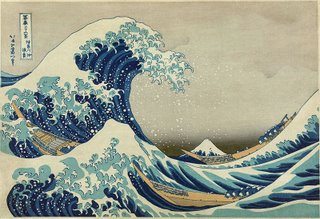 The Great Wave off Kanagawa by Hokusai Ukiyo-e, as practiced by artists like Hokusai, focused on images of the courtesans and Kabuki actors who were popular in Japan’s cities at the time.
Hokusai eventually changed the subjects of his works, moving away from the images of courtesans and actors that were the traditional subjects of ukiyo-e. Instead, his work became focused on landscapes and images of the daily life of Japanese people from a variety of social levels.
Hokusai had a long career, but he produced most of his important work after age 60. His most popular work is the ukiyo-e series Thirty-six Views of Mount Fuji, which was created between 1826 and 1833. It actually consists of 46 prints (10 of them added after publication). In addition, he is responsible for the 1834 One Hundred Views of Mount Fuji ) a work which “is generally considered the masterpiece among his landscape picture books.”
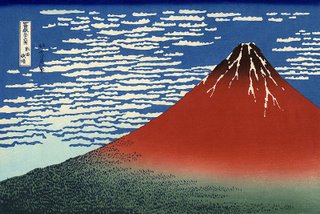 Red Fuji Ukiyo-e Print by Hokusai's series: Thirty-six Views of Mount Fuji Mount Fuji has traditionally been linked with eternal life.
His influences also stretched to his contemporaries in nineteenth century Europe whose new style Art Nouveau, or Jugendstil in Germany, was influenced by him and by Japanese art in general. This was also part of the larger Impressionist movement, with similar themes to Hokusai appearing inClaude Monet and Pierre-Auguste Renoir.
 Steve McIntosh, Founder of Now & Zen, Boulder, CO All Now & Zen products have been conceived and designed by Steve McIntosh. Steve’s love of beauty and passion for spiritual practice led him to found Now & Zen with the goal of creating products that would make a real difference in people’s lives. Steve created Now & Zen’s brand aesthetic by combining the harmonic proportions of sacred geometry with motifs from traditional Japanese culture. This has resulted in product designs that have a timeless, universal appeal.
Now & Zen Headquarter Store
1638 Pearl Street
Boulder, CO 80302
Posted in Beauty, Hokusai Wave, Japanese Inspired Zen Clocks, Now & Zen Alarm Clocks
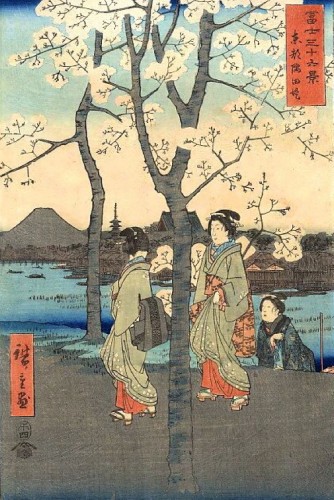 Flower Viewing- Woodblock print of Mount Fuji and cherry blossom from 36 Views of Mount Fuji by Hiroshige. Spring in Boulder, Colorado – Time for a ‘Flower-viewing’ Party!
Here at Now & Zen one of our favorite ways to relax is to view the Cherry Blossoms in Japan. Of course, it is not possible to travel so far away very often, so we try to take a moment to enjoy flowering trees and flowers each day during the spring-time in Boulder, Colorado.
Here is a brief description of the origins of the “Flower viewing” tradition in Japan:
Hanami (“flower viewing”) is the Japanese traditional custom of enjoying the beauty of flowers, “flower” in this case almost always meaning cherry blossoms, or ume blossoms. From mid January to early May, sakura bloom all over Japan. The blossom forecast is announced each year by the weather bureau, and is watched carefully by those planning hanami as the blossoms only last a week or two. In modern-day Japan, hanami mostly consists of having an outdoor party beneath the sakura during daytime or at night. Hanami at night is called yozakura.
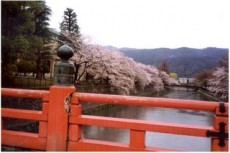 Flower Viewing- Cherry Blossoms in Kyoto During the Heian Period (794–1191), Japanese sought to emulate many practices from China, including the social phenomenon of flower viewing where the imperial households, poets, singers and other aristocrats would gather and celebrate under the blossoms. In Japan, cherry trees were planted and cultivated for their beauty, for the adornment of the grounds of the nobility of Kyoto, at least as early as 794. In China, the ume “plum” tree (actually a species of apricot) was held in highest regard, but by the middle of the ninth century, the cherry blossom had replaced the plum as the favored species in Japan.
 Flower Viewing- Sakura spring blossoms Emperor Saga of the Heian Period adopted this practice, and held Flower viewing parties with sake and feasts underneath the blossoming boughs of sakura trees in the Imperial Court in Kyoto. Poems would be written praising the delicate flowers, which were seen as a metaphor for life itself, luminous and beautiful yet fleeting and ephemeral. This was said to be the origin of hanami in Japan.
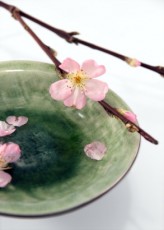 Flower Viewing- Cherry Blossoms Hanami festivals celebrate the beauty of the cherry blossom and for many are a chance to relax and enjoy the beautiful view.
Now & Zen Headquarter Store
1638 Pearl Street
Boulder, CO 80302
(800) 779-6383
Posted in Beauty, Japanese Inspired Zen Clocks, Now & Zen Alarm Clocks
« Previous Page
Next Entries »
|
|
|
|